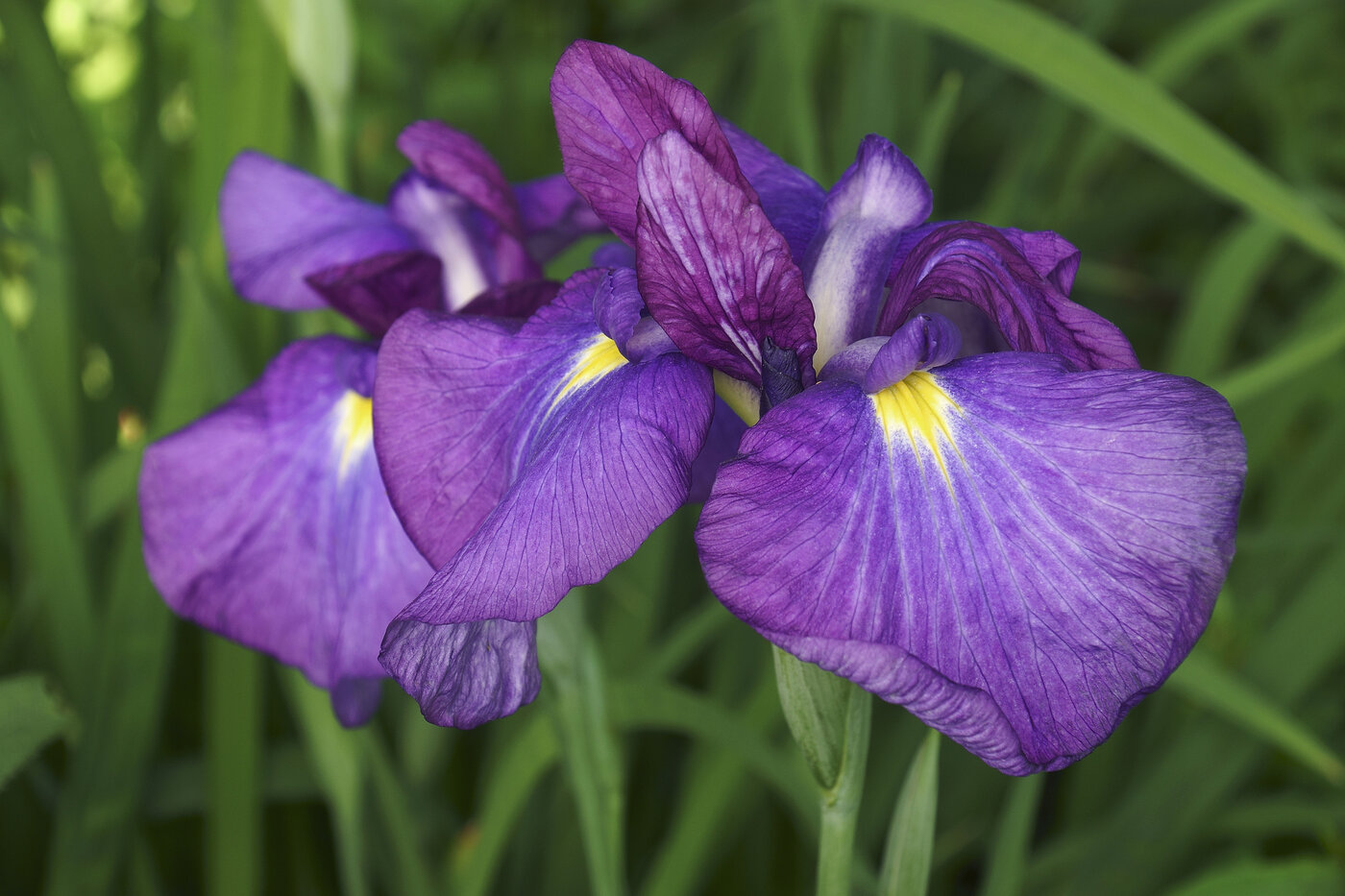Searching for flowers that start with a specific letter is an opportunity to learn about new flower species we may never have considered previously. It’s also possible that you or someone you know has a name beginning with H, and you’re wondering what to buy for yourself or what to get them!
Using this guide about flowers that start with H, finding the perfect plants and flowers for every setting has never been easier. Let’s begin discussing these flowers you might not have heard of before.
List Of Flowers That Start With The Letter H
- Hyacinth bean vine (Lablab purpureus)
- Helianthus annuus (Sunflower)
- Hyacinth (Hyacinthus orientalis)
- Hydrangea (Hydrangea macrophylla)
- Hollyhock (Alcea rosea)
- Helenium (Helenium autumnale)
- Hemp-agrimony (Eupatorium cannabinum)
- Honeysuckle (Diervilla lonicera)
- Hardy impatiens (Impatiens omeiana)
- Hosta (Funkia)
- Horned violets or Pansies (Viola cornuta)
- Hebe (Hebe spp.)
- Heart flower (Dicentra spectabilis)
- Hibiscus (Hibiscus rosa-sinensis)
- Heather (Calluna vulgaris)
- Harebell (Campanula rotundifolia)
- Helichrysum aureonitens (Asteraceae)
- Hemerocallis (Hemerocallis spp.)
- Heliotrope (Heliotropium arborescens)
- Hellebore (Helleborus spp.)
- Hepatica (Hepatica nobilis)
- Hyacinthoides hispanica (Spanish bluebell)
- Heliconia (Lobster-claws)
- Himalayan blue poppy (Meconopsis betonicifolia)
- Honesty flower (Lunaria annua)
Annual Flowers That Start With An H
Hyacinth bean vine (Lablab purpureus)
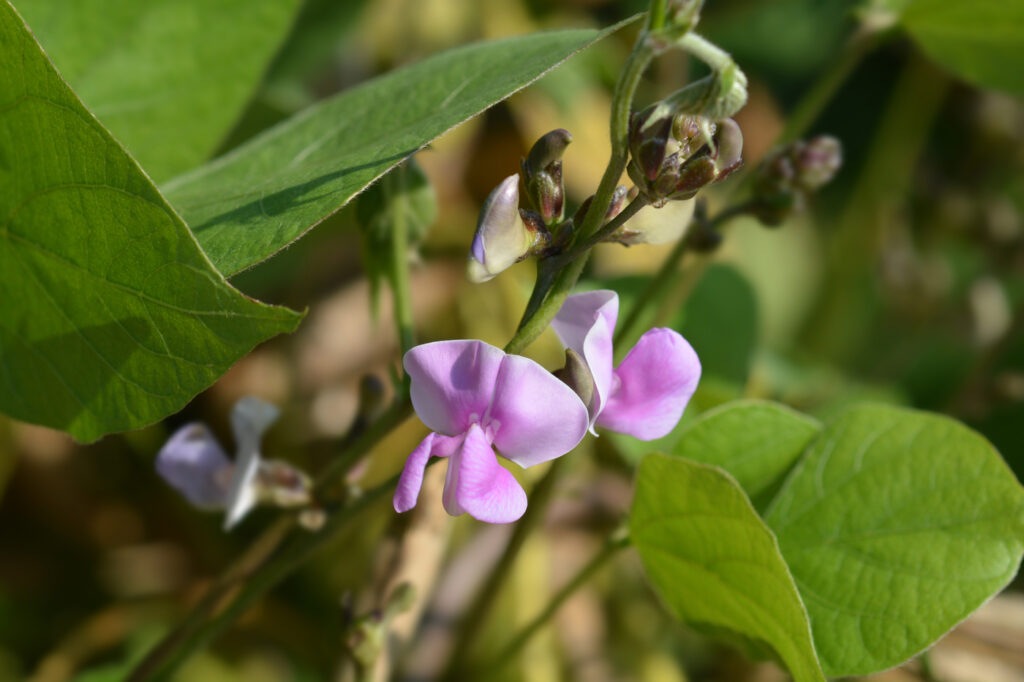
The hyacinth bean vine is a twining vine with purple stems and splendid flowers and pods. It’s an annual plant perfect for suburban gardens.
It has a lot of uses; you can use it to brighten up a room or even cook its immature pods in nutritious vegetable dishes!
With a strong trellis to hold it up, the hyacinth bean vine loves sunny areas with moist soil that drains well.
Helianthus annuus (Sunflower)
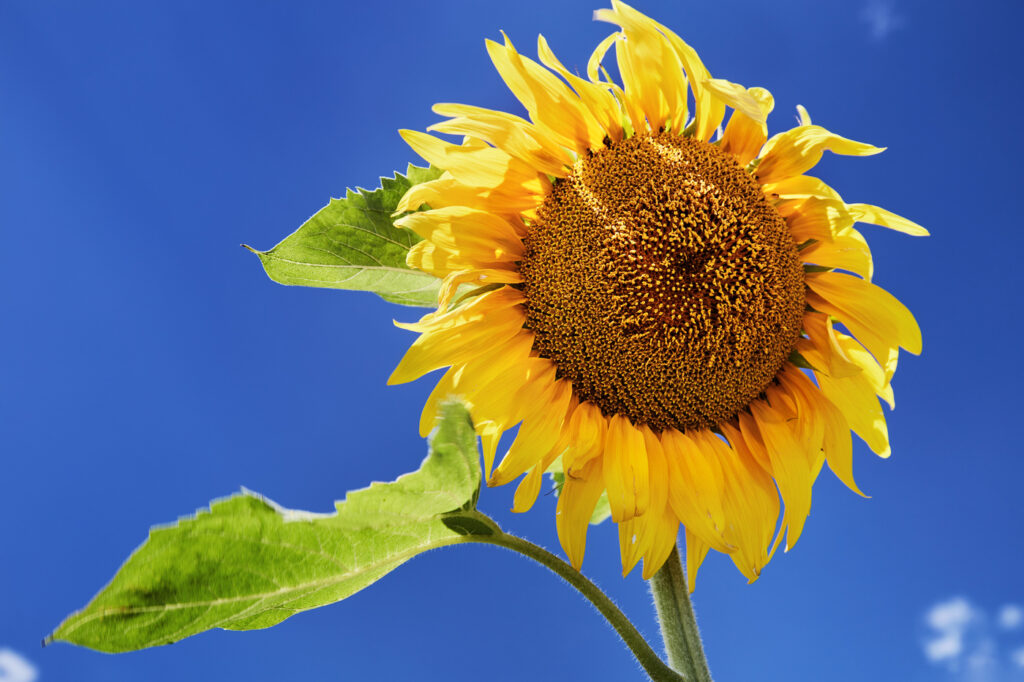
Helianthus is the genus name for about 70 species of annual and perennial plants commonly known as sunflowers.
While well-known as tall types, many smaller varieties only reach heights of 40-60cm.
Blooming from July to October, these bright yellow flowers are a lovely addition to any garden. They’re also great as a food source; their seeds make perfect snacks or entrees for people who are vegetarian or vegan!
Perennial Flowers That Start With H
Hyacinth (Hyacinthus orientalis)
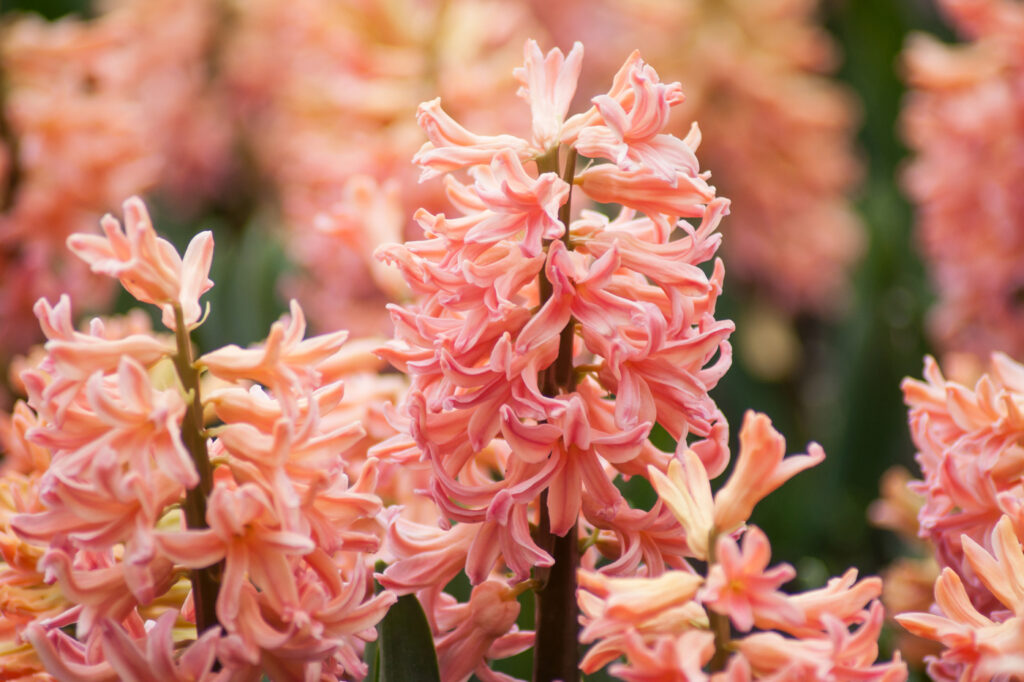
Hyacinths are one of the first flowers to bloom in spring. And while they were once only available in shades of blue and violet, today, there are many other hues, such as lilac, pink, white, cobalt blue, cream, and even red.
Often referred to as “nature’s perfume,” hyacinths are easy to grow and come back year after year. This is definitely one flower beginning with H that you’ll want to try growing once in your lifetime!
Hydrangea (Hydrangea macrophylla)
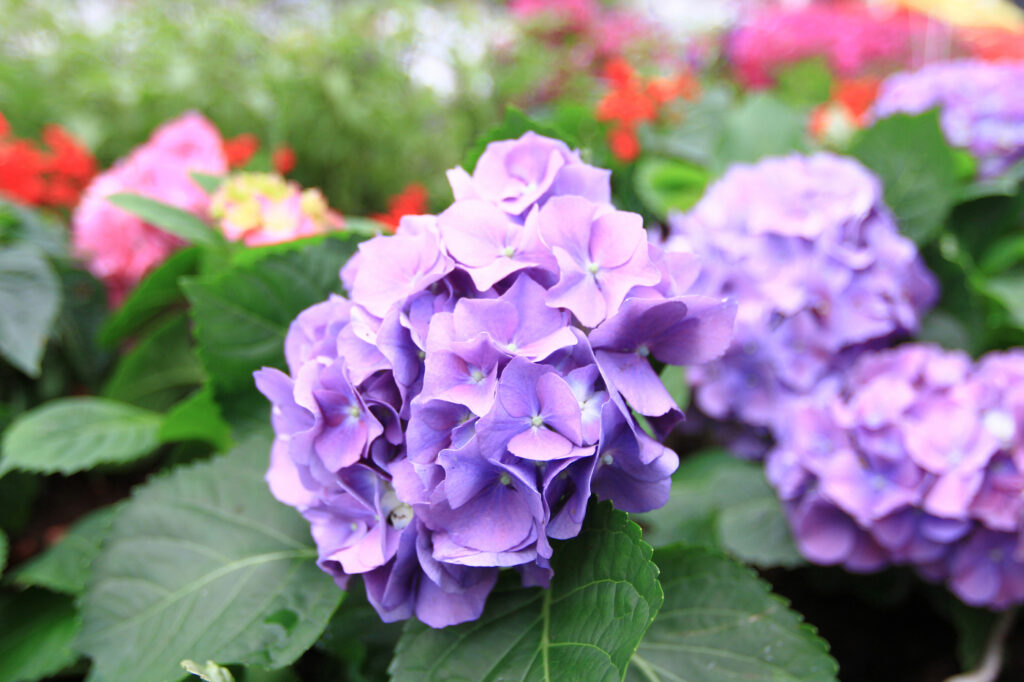
Hydrangea, also known as hortensia, is a flowering shrub genus with approximately 75 species.
These gorgeous plants are easy to handle, tolerate nearly any kind of soil, and produce numerous blooms, making them unrivaled in the shrub world for their stunning flowers.
A single plant can have a variety of colorful flowers, including blue, pink, white, and lavender.
Hollyhock (Alcea Rosea)
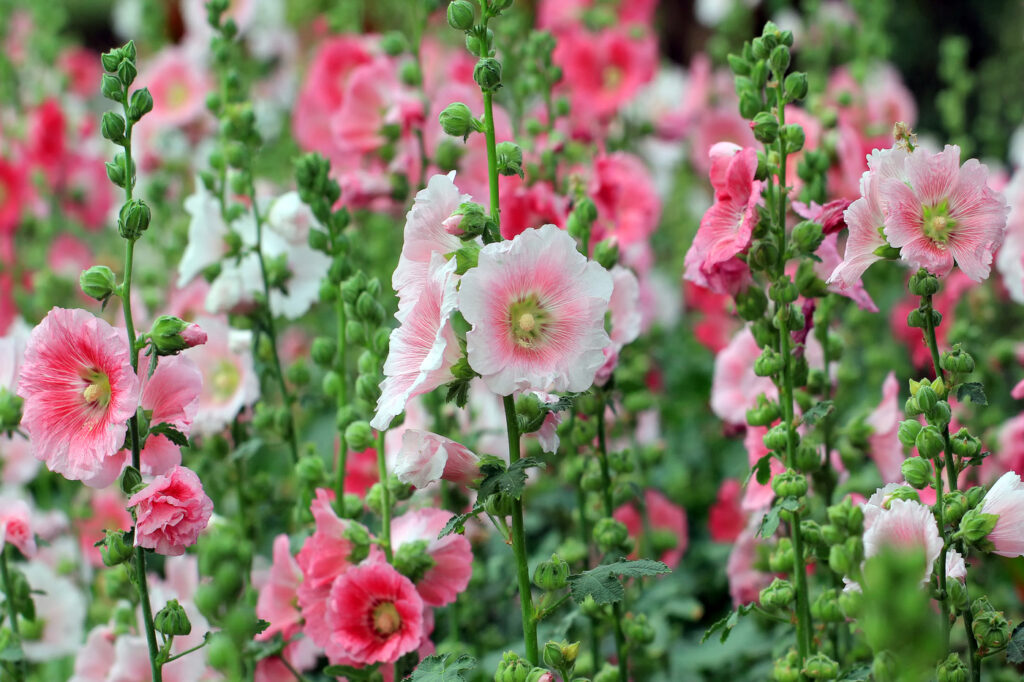
Hollyhocks are an excellent addition to cottage gardens and border backgrounds because of their height, contrast, and vintage appeal.
Seeds planted in August or September will produce blooms the following year. Although single hollyhocks only last one season, through self-seeding, new sprouts will appear in your garden year after year.
Hollyhocks also have another purpose; they make great culinary ingredients! Pretty in pink, hollyhock is one of the flowers beginning with H that you should try on your palate.
Helenium (Helenium autumnale)
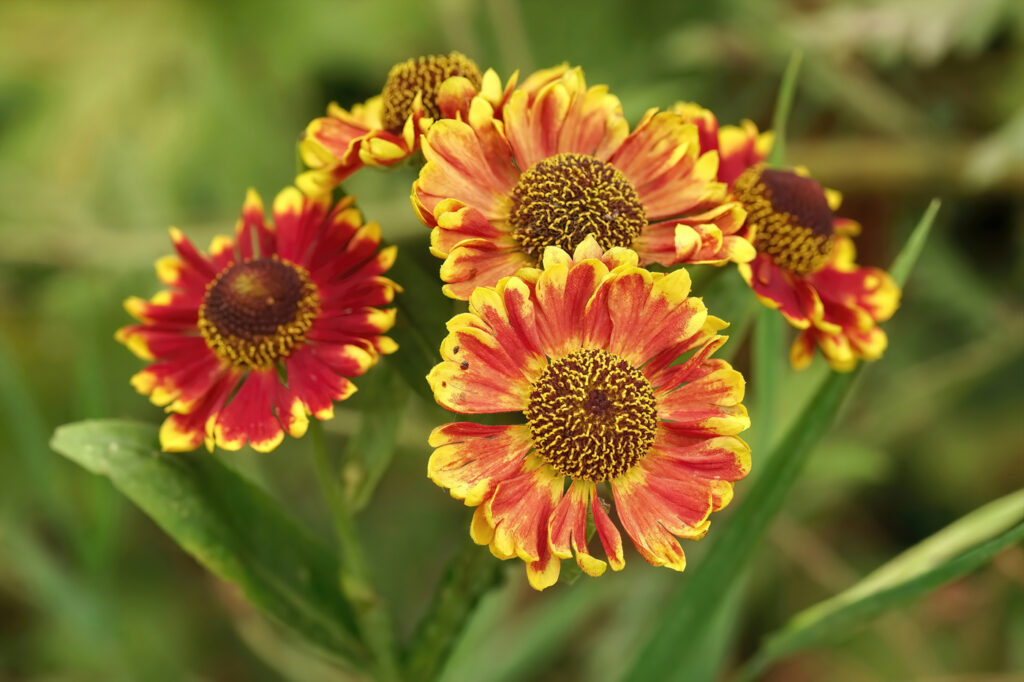
Helenium flowers put on an impressive floral show from June to the first sign of frost. Their yellow and orange flowers resemble daisies. Some species were also called sneezeweed because they were used to make snuff.
This vibrant flower is durable and can withstand high temperatures. Heleniums thrive in sunny locations with well-drained or dense soil
Hemp-agrimony (Eupatorium cannabinum)
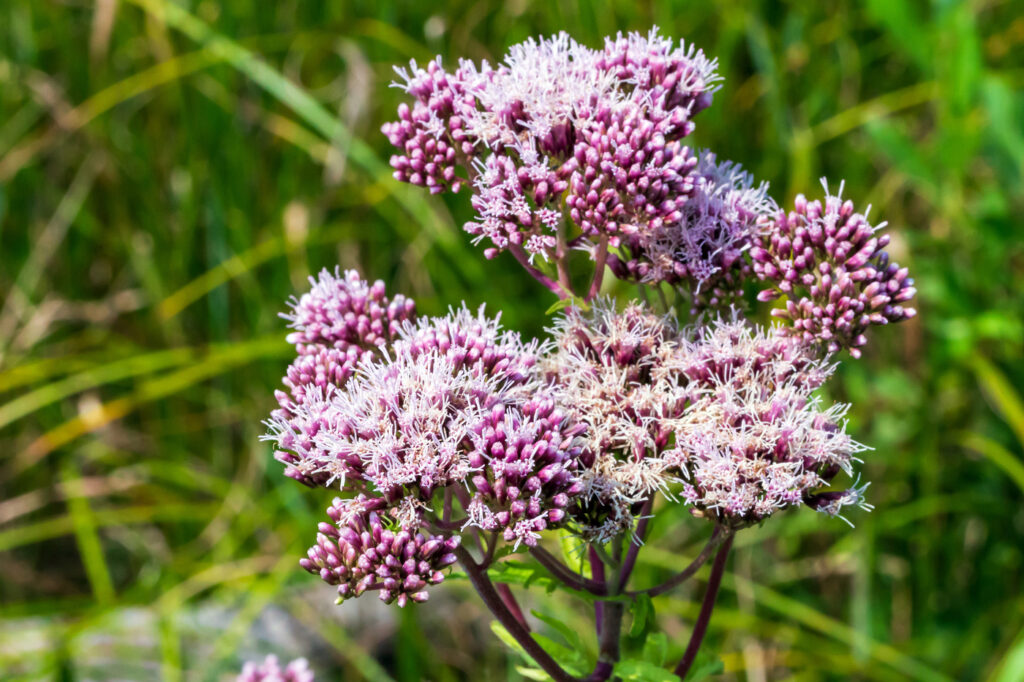
Hemp-agrimony is a shrub that blooms with clusters of pinkish-purple flowers from July through September. The flowers of hemp-agrimony shrubs attract a wide range of insects, so expect a swarm of butterflies to visit their lovely blooms.
This plant can grow up to 1.5 meters tall and wide and survive in extremely cold conditions.
Honeysuckle (Diervilla lonicera)
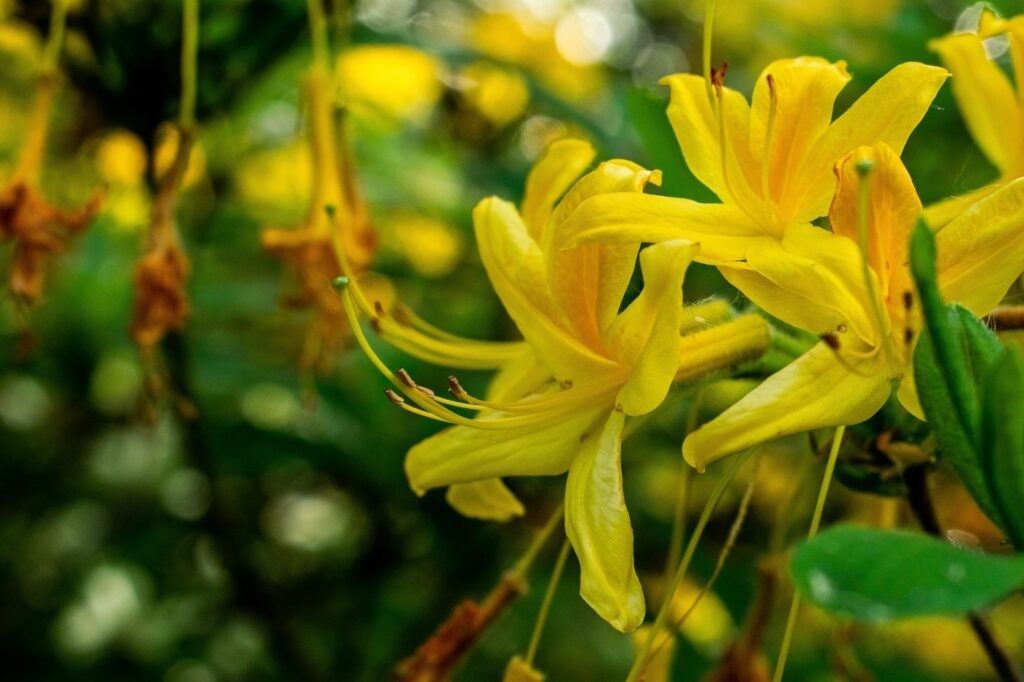
Honeysuckles are best known as twining climbers with fragrant tubular blossoms. They are often used to cover walls, fences, and pergolas. But several evergreen honeysuckle shrubs are also ideal for garden hedges, with a popular one being Lonicera nitida.
Trivia: its nectar and flowers make for a nice treat in the summer!
Hardy impatiens (Impatiens omeiana)
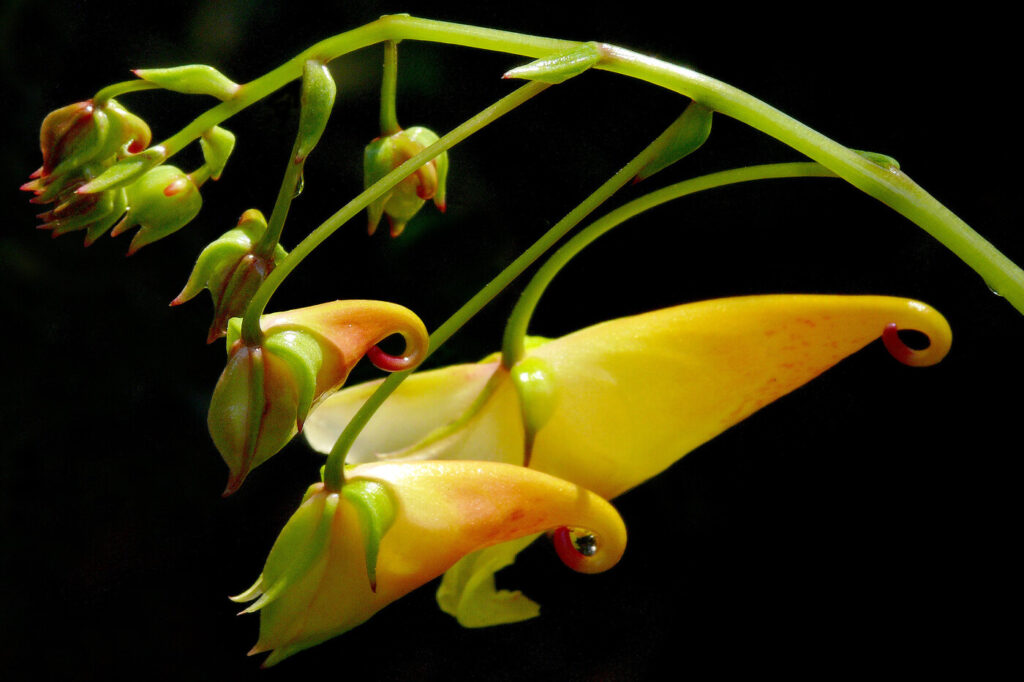
Hardy impatiens is a robust plant with long, tubular purple blooms on red stems. These decorative plants come in various colors, including red, yellow, blue, white, and pink.
Hardy impatiens range in size from low-growing species to those that can reach even 2 meters. Their flowering season can last from midsummer until frost.
Hosta (Funkia)
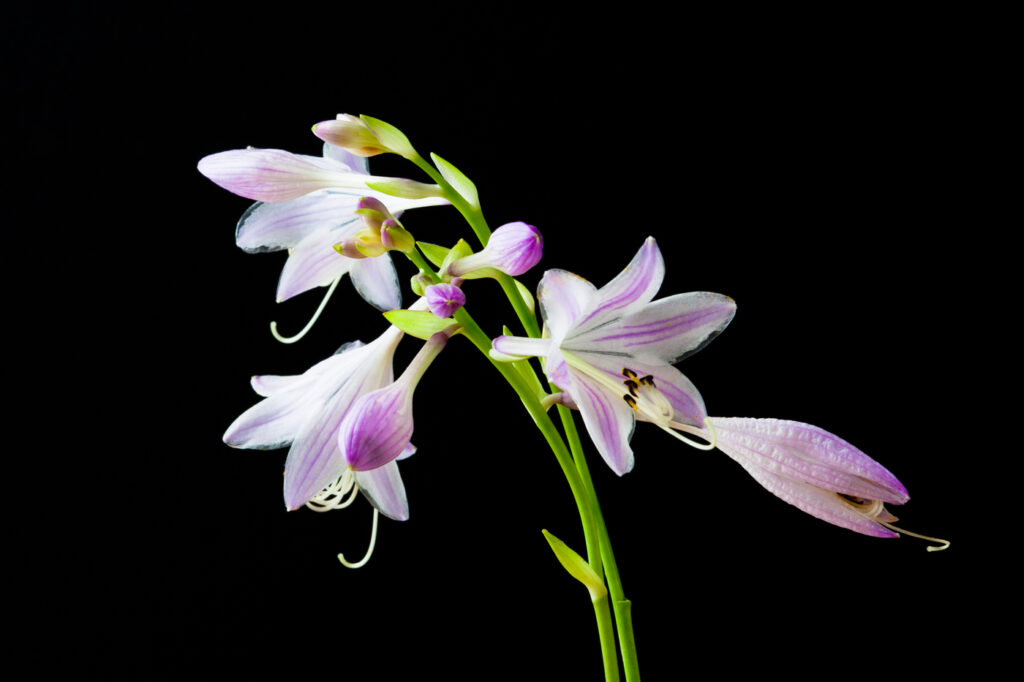
Hostas come in a wide variety and should be the heart of any shaded garden. Due to their beautiful leaves, Hostas are a popular choice for both beginners and experienced gardeners. They originate in China but are also widely grown in neighboring countries like Japan and South Korea.
Flowers of pale violet or white appear on hostas in late spring or summer. This late blooming period is why it’s sometimes called the “August lily.”
Horned Violets or Pansies (Viola cornuta)
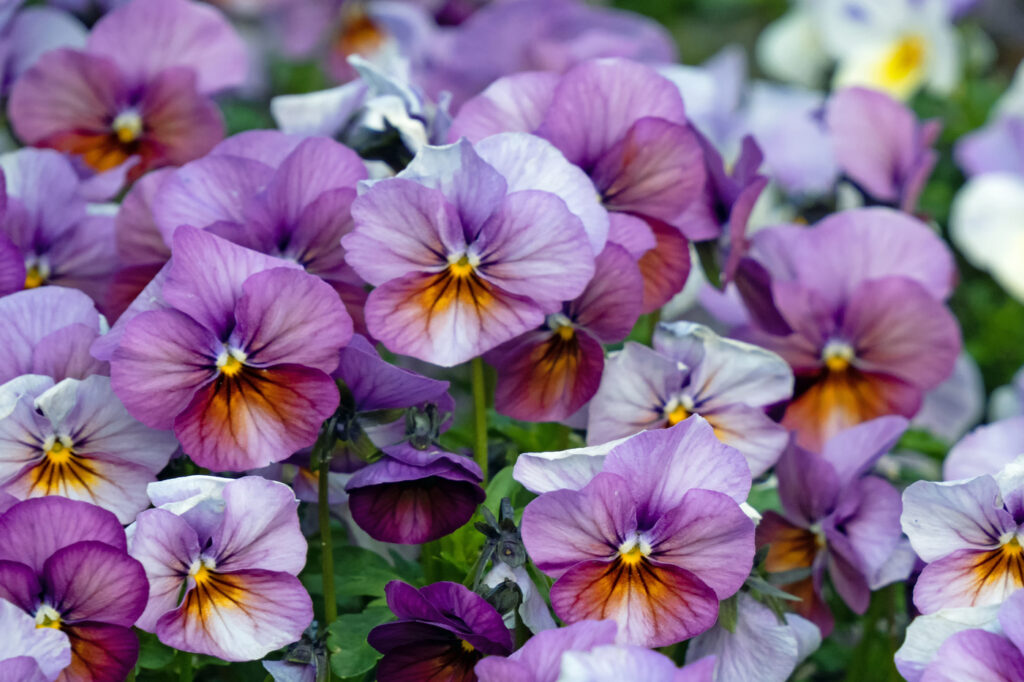
Horned violets are typically grown as perennials but can also be grown as biennials or annuals.
Most horned violets have two distinct colors: shades of blue or violet and lavender. Blooming in early spring, they are a lovely addition to the first flowerbeds of the year.
For fans of blue and purple, these flowers starting with H are a good choice!
Hebe (Hebe spp.)
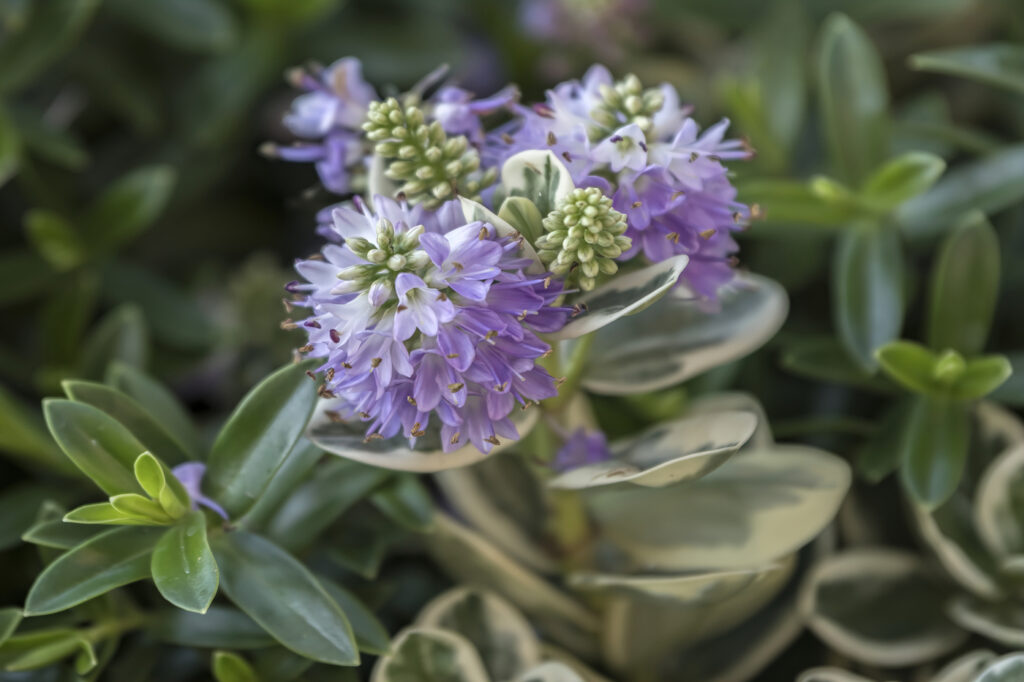
The evergreen perennial hebe shrub works well inside your home and in the garden. It takes its name from Greek mythology, from Hebe, the goddess of youth.
It’s surprisingly resistant and not hard to cultivate, making it a unique accent in indoor and outdoor spaces if given the proper care. Hebes prefer full sun and acidic, consistently moist soil.
Heart flower (Dicentra spectabilis)
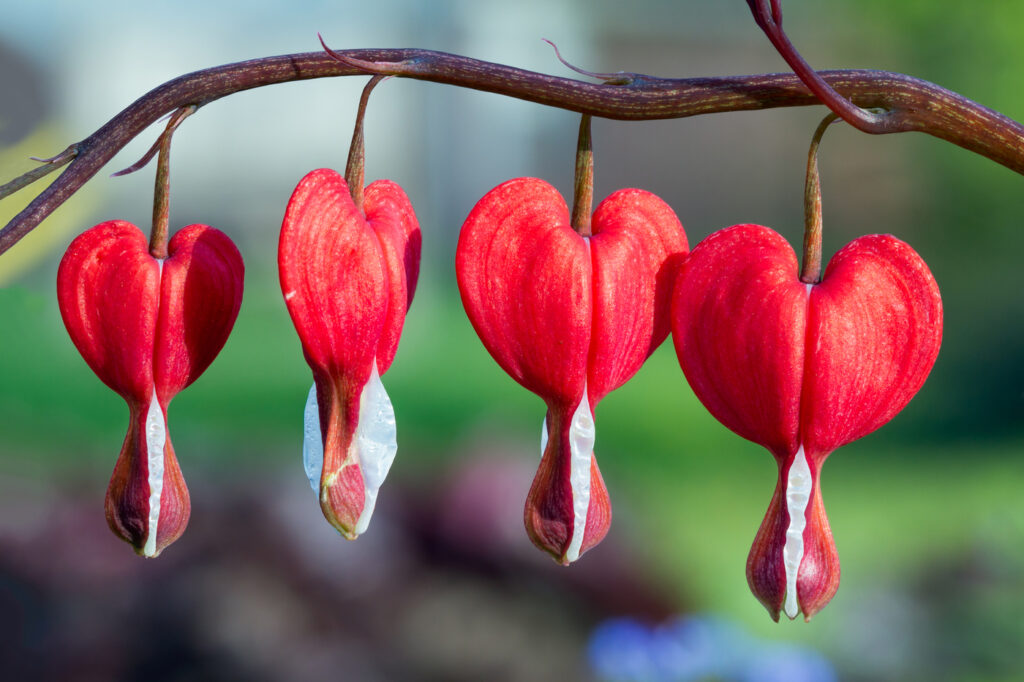
This stunning and rare flowering plant thrives in partial shade. Seeing a heart flower for the first time is all it takes to fall in love.
It stands out not only because of its pretty, feathery, intensely green leaves but primarily because of its pink or white heart-shaped flowers. Heart flowers are sure to make any atmosphere dreamy and romantic.
Hibiscus (Hibiscus rosa-sinensis)
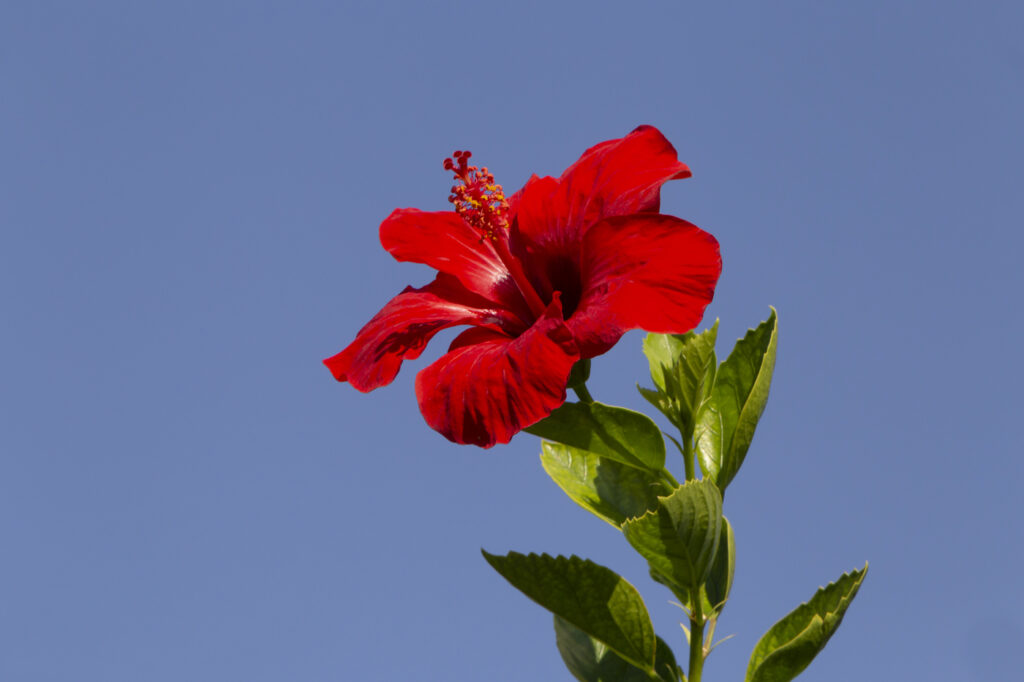
Hibiscus comes in hundreds of colors, ranging from blue to vibrant red and everything in between.
Annual and perennial species of the genus flourish in warm, subtropical, and tropical regions. However, they are cold-sensitive and must be brought indoors before the first frost.
Heather (Calluna vulgaris)
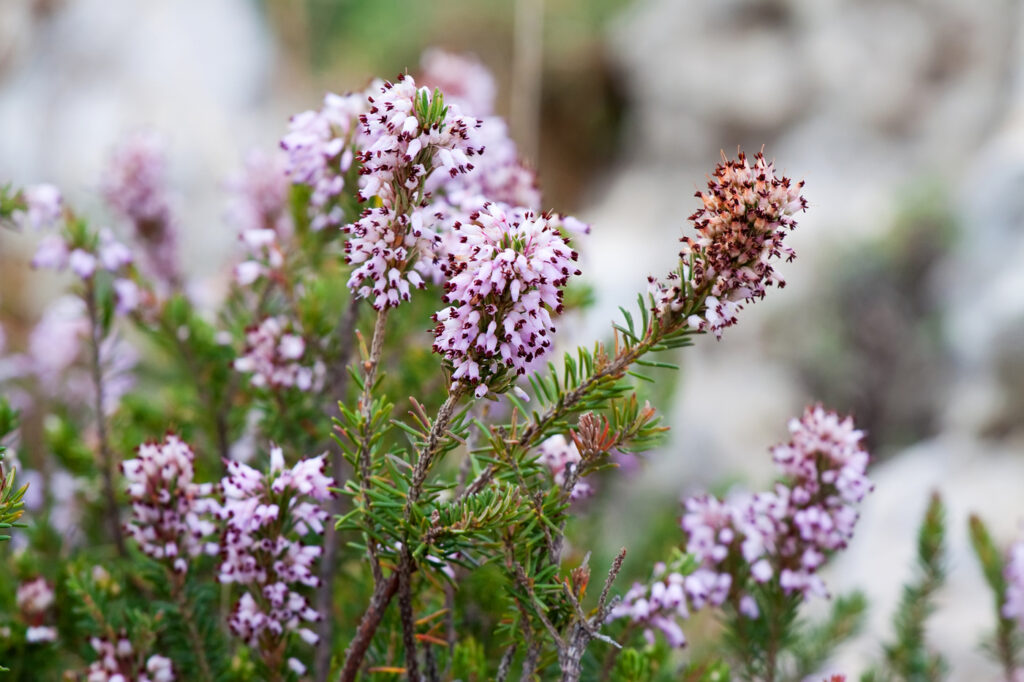
Heathers are low-growing, evergreen shrubs typically found on moorlands. White, pink, purple, and red are just some of the colors they come in. They also tend to bloom at various times of the year.
Some heathers do better in neutral or alkaline soil, but all species do well in acidic soil.
Harebell (Campanula rotundifolia)
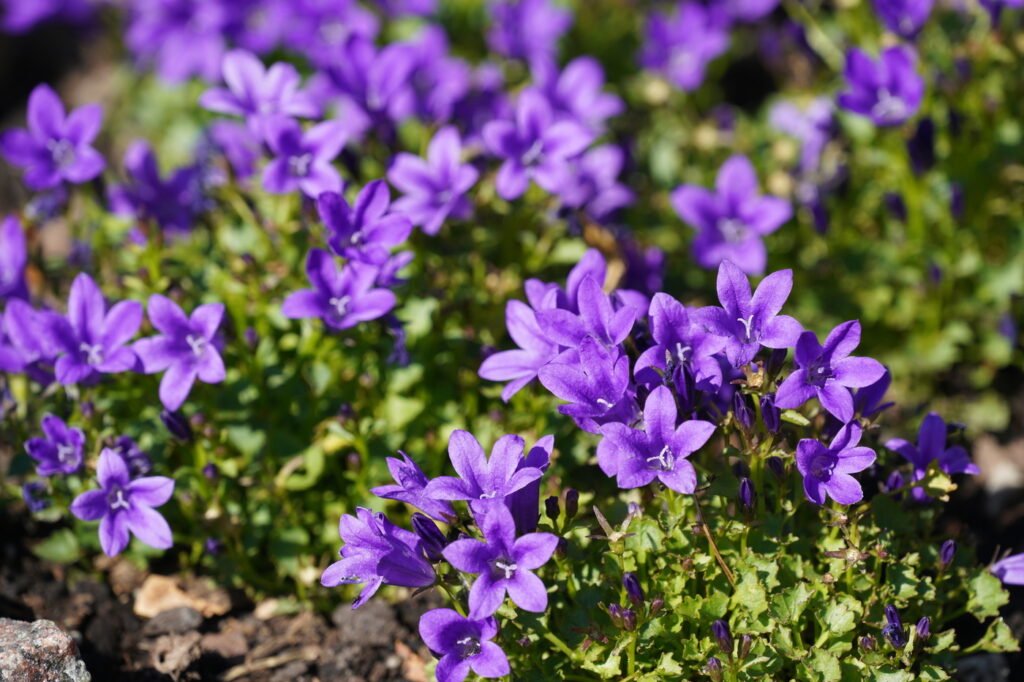
The blossoms of harebells are beautiful bells of various colors, including white and purple, that bloom from the end of June to the start of October.
Although delicate in appearance, this blossom is more robust than you might imagine. It grows on rocky mountain slopes, coastal edges, and open meadows.
Be careful though. This is a fast-spreading flower that, in the right conditions, may cover an area with a beautiful carpet of blue blossoms.
Helichrysum aureonitens (Asteraceae)
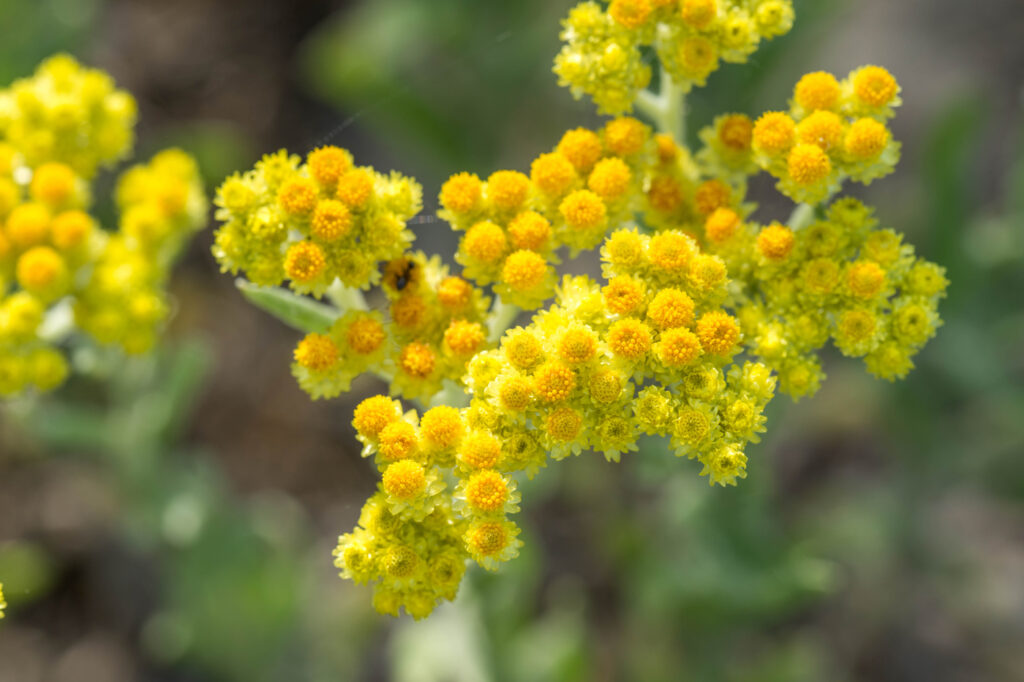
Helichrysum aureonitens is a wildflower whose oil is a prominent ingredient in natural medicine.
It’s not cultivated very often, but it has great potential. Its yellow flowers always make an excellent addition to rustic or rural gardens. Plus, you can also get a unique fragrance from its petals!
Hemerocallis (Hemerocallis spp.)
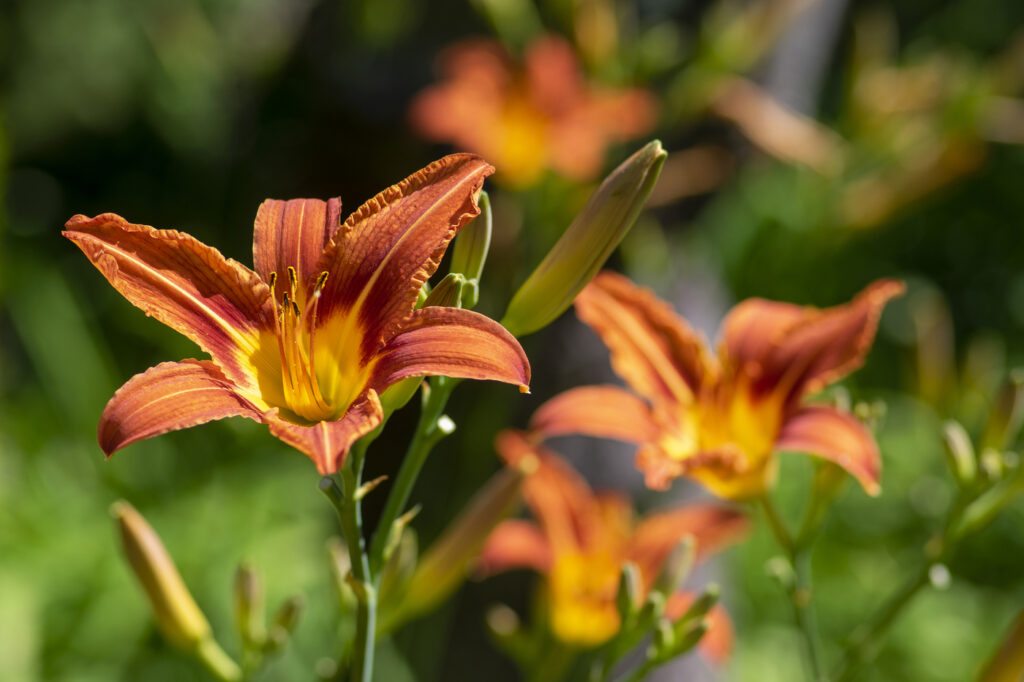
Big, lily-looking blossoms are a telltale sign of a hemerocallis plant but you might know them better by their common name of “daylily.”
Hemerocallis has many colors; from white and cream, to yellow, orange, pink, red, purple, brown, and even a red so dark it almost appears black.
The popularity of hemerocallis is due to their stunning flowers, ease of care, and long lifespan.
Heliotrope (Heliotropium arborescens)
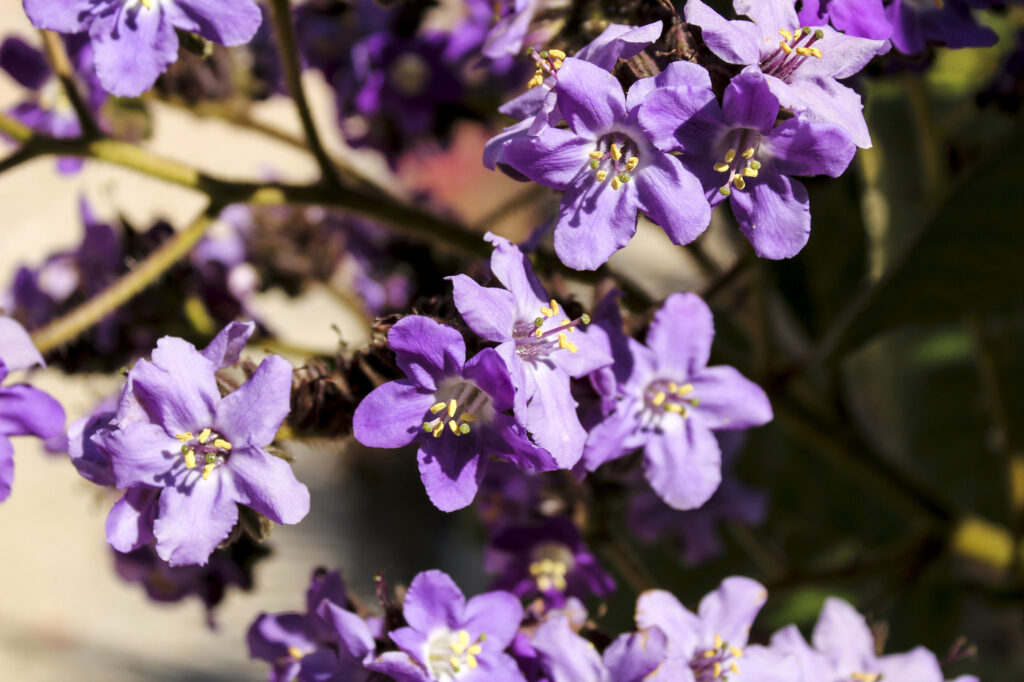
Purple-hued heliotropes are a low-maintenance flower. Ideally, it should be grown in the sun but can also thrive in mild shade.
Heliotrope has a long blooming season, with flowers appearing from May through September. Just remember that heliotrope is highly toxic for dogs and cats, so it’s not recommendable for purchase or gifts among animal lovers.
Hellebore (Helleborus spp.)
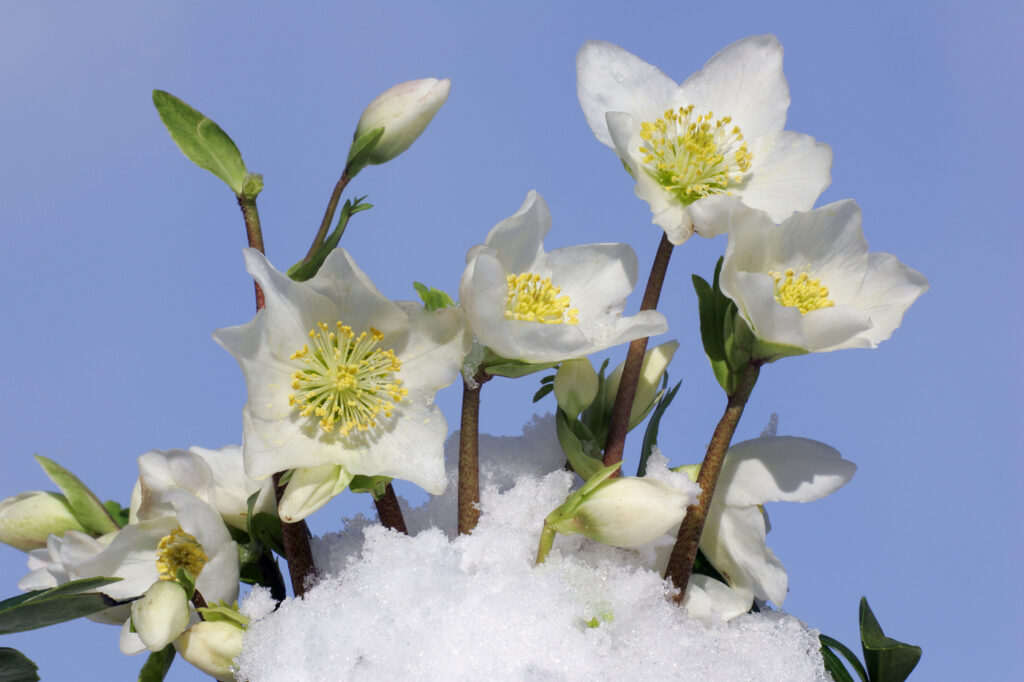
Hellebore flowers bloom in late winter or early spring, sometimes while the snow is still on the ground. The hellebore plant comes in a rainbow of bloom hues, from white to black.
They thrive in rich, moisture-retentive soil, and most will tolerate full sun to almost full shade. Hellebores have many romantic names like “winter rose” or “Christmas rose,” although it is poisonous.
Hepatica (Hepatica nobilis)
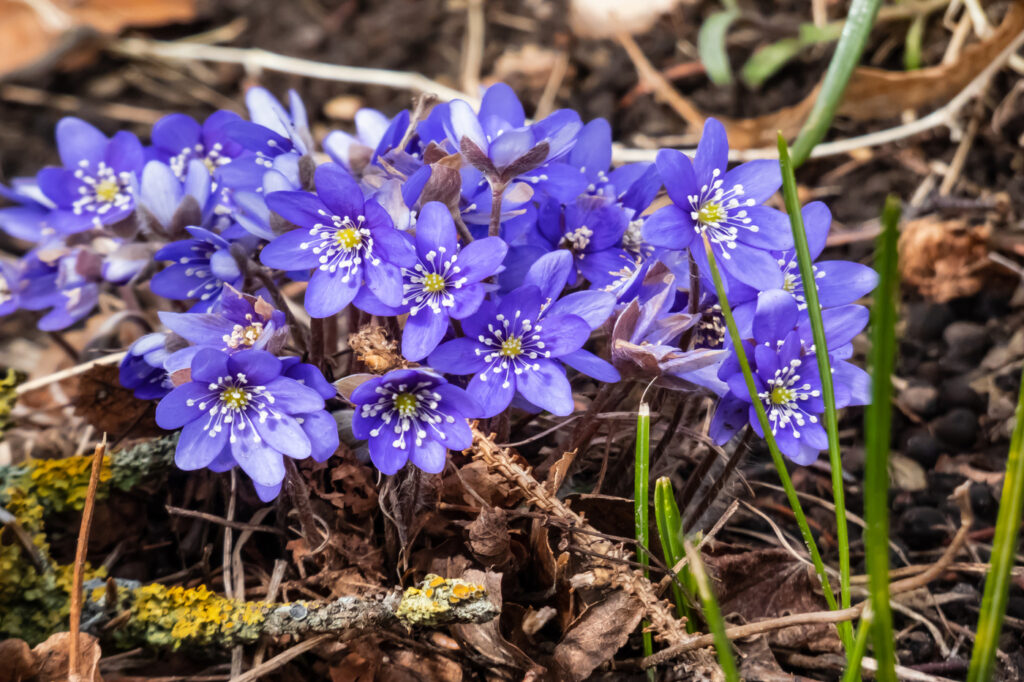
The hepatica flower or liverleaf is a typical springtime sight in hardwood forests. Those with a very shaded forest garden may find this an excellent option.
Tiny blue flowers are typical for hepatica; however, pink and white variants are also common. Although slow to grow, Hepatica nobilis flowers are weather resistant and worth the wait when they unveil their flowers.
Hyacinthoides hispanica (Spanish bluebell)
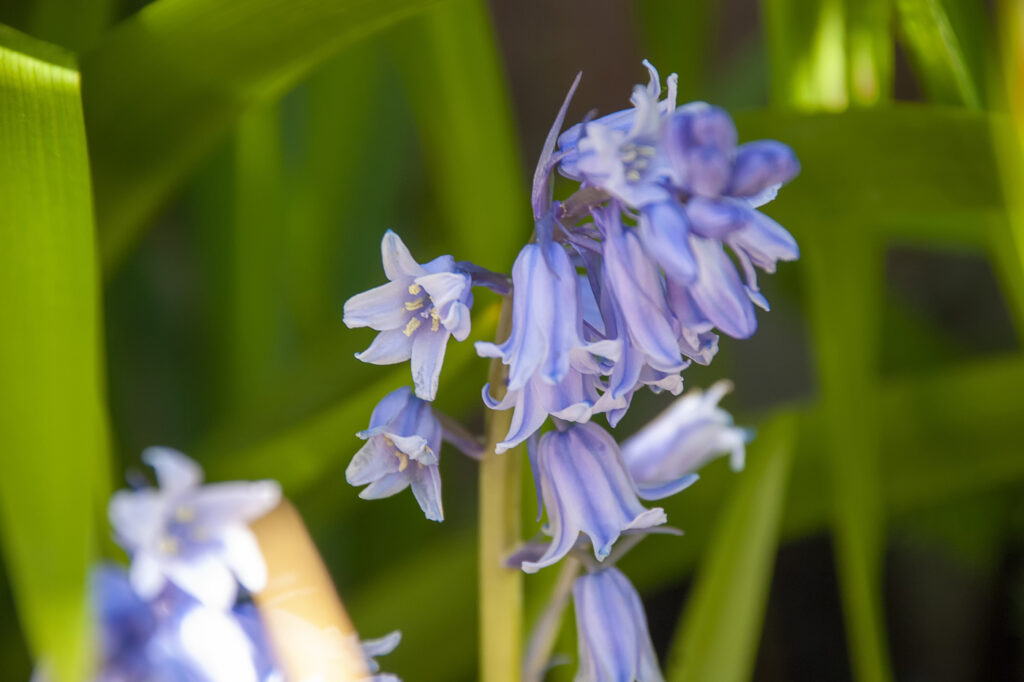
Hyacinthoides hispanica is also known as the Spanish bluebell or wood hyacinth. April and May are its prime flower-blooming months.
Easy to cultivate, the Spanish bluebell thrives in full sun to partial shade and medium moisture, well-drained soil. It also attracts many animals like butterflies and hummingbirds so plant them if you want a colorful surprise in your garden.
Heliconia (Lobster-claws)
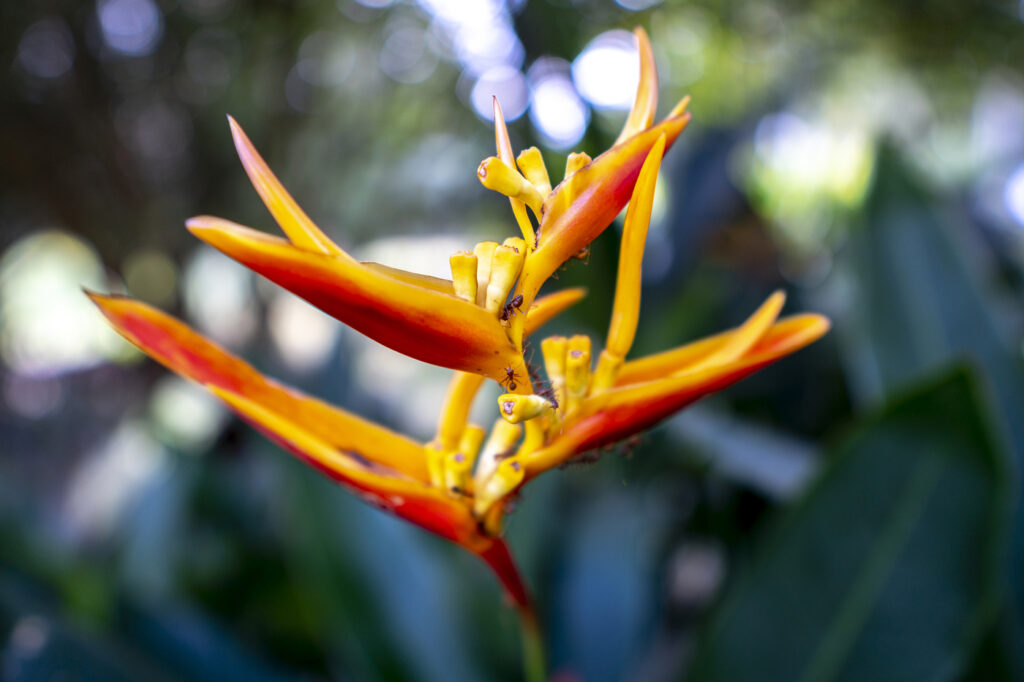
Heliconia is a tropical flowering plant that has many names. It is also called the false bird of paradise, parrot’s beak, and lobster-claw.
Large flower stalks of heliconias come in various vivid colors and are frequently used as decorative accents in flower bouquets. This is a helpful tidbit for florists and if you like making your own floral arrangements!
Himalayan blue poppy (Meconopsis betonicifolia)
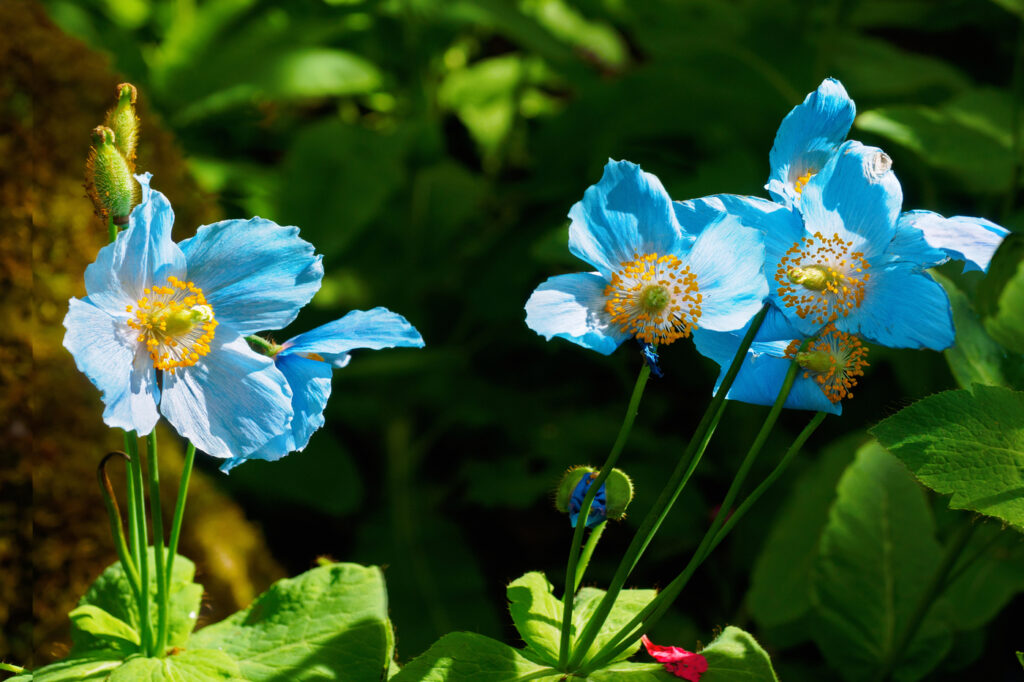
In late spring or early summer, the Himalayan blue poppy puts on a fantastic display of its true blue flowers. The blue poppy prefers moist, well-drained soil in partial shade.
Although not all blue poppies survive the year after blooming, you can boost the chances of your flowers surviving and returning the following year by pinching off the buds before they open in the first season.
Honesty flower (Lunaria annua)
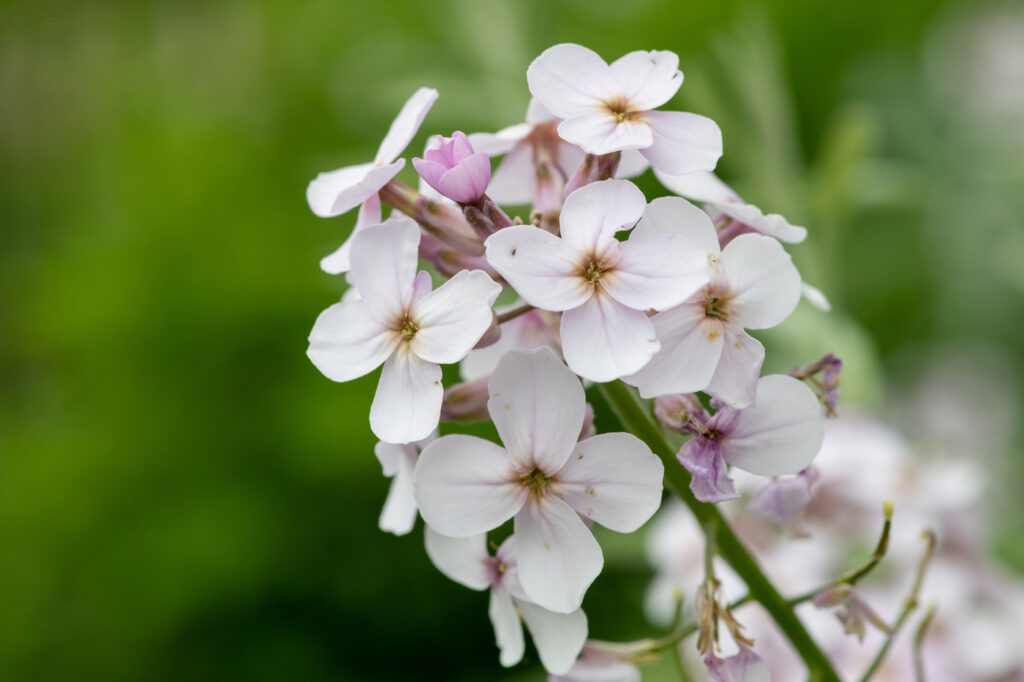
Honesty is a spring biennial that doesn’t need much care and has beautiful purple flowers. In addition, its plants are self-seeding and reliably return season after season. This makes it perfect for gardening beginners and your friend who claims not to have a green thumb!
Frequently Asked Questions (FAQ) About Flowers That Start With The Letter H
What purple flowers start with an H?
Numerous flowers that start with H are purple. Here are some: Hydrangea, Hemerocallis, Hyacinth, Harebell, Hardy impatiens, Heather plant, Hebe flower, Heliotrope, and Hibiscus.
What are some spring flowers that start with H?
In case you’re searching for some early springtime beauty, here is a list of spring flowers that start with H: Horned violets, Hyacinth, Hepatica, Honesty-flower, Himalayan blue poppy, and Hyacinthoides hispanica.
Which hydrangea flowers begin with the letter H?
There are two distinct hydrangea flowers whose names begin with the letter H:
Hydrangea hirta: also known as the “nettle-leaved hydrangea” due to the shape of its leaves.
Hydrangea heteromalla: commonly known as woolly hydrangea. A very rare, impressive variety with large white, lacy inflorescences.
What are some wild mountain flowers starting with H?
Helichrysum and harebell are two flowers that start with an H and are naturally grown in the mountains.
Are there any blue-purple flowers that start with H?
Yes, there are. Here’s a list of flowers that start with the letter H and are blue-purple: Horned violets, Hepatica
Harvestbells, Heliotrope, Himalayan Blue Poppy, Hydrangea
Harebell, and Hyacinth.
Are there any tropical flowers that start with H?
Yes, there are a couple. Here are two names of tropical flowers that start with an H:
Half flowers grow on the tropical beaches of the Indian Ocean. The five petals of the flower form a fan, hence the flower name.
Heliconia rostrata is a herbaceous perennial plant that grows in South America. It is also known as the hanging lobster claw or false bird of paradise.
Are there any flowers that start with H and smell good?
Yes, hyacinth and honeysuckle are two flowers that start with H that also smell good.
Their intense fragrance is a truly natural perfume. The scent of hyacinth is often used as a base for many women’s perfumes.
Are there any summer flowers beginning with H?
Yes, here are four types of flowers that start with H to paint your summer garden with a rainbow of colors: Helianthus, Helenium, Hydrangea, and Heliotrope.
Are there any yellow outdoor flowers that start with the letter H?
Yes indeed. Here’s a list of crowd-favorite outdoor yellow flowers that start with the letter H: Helianthus, Helenium, and Hemerocallis.
Are there any Japanese flowers that start with H?
Yes, there are Japanese flowers that start with an H. Here are three:
Hasu (Lotus): This unique and aromatic flower blossoms in the summer in many Japanese ponds close to temples and shrines.
Himawari (Japanese Sunflower): This Japanese sunflower grows in Japan in vast fields that look like a yellow sea.
Hanashobu (Japanese Iris): Hanashobu is another name for Japanese Iris. There are more than 200 Hanashobu gardens all over the Japanese islands
Feature image: PantherMediaSeller; Image 1: nahhan; Image 2: muha04; Image 3: NeydtStock; Image 4: sameashk.yahoo.com.hk; Image 5: leisuretime13; Image 6: HeWall; Image 7: AlexanderZam; Image 8: Wirestock; Image 9: James Gaither; Image 10: volgariver; Image 11: kama71; Image 12: spetenfina; Image 13: KennethKeifer; Image 14: romantiche; Image 15: Jim_Filim; Image 16: Sujitto; Image 17: aga7ta; Image 18: ivusakzkrabice; Image 19: soniabonetruiz; Image 20: MianHamza; Image 21: Kris.Rad; Image 22: ratherton; Image 23: Bluefish_ds; Image 24: pr2is; Image 25: tommeaker26@gmail.com
